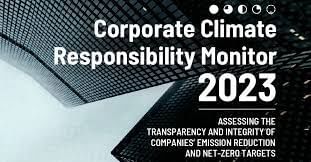UPSC Daily Current Affairs- 19th February 2023 | Current Affairs & Hindu Analysis: Daily, Weekly & Monthly PDF Download
GS-I
Thwaites Glacier/ Doomsday Glacier
Why in News?
Scientists studying Antarctica’s vast Thwaites Glacier say warm water is seeping into its weak spots, worsening melting caused by rising temperatures.
About Thwaites Glacier/ Doomsday Glacier:
- Thwaites Glacier, nicknamed the Doomsday Glacier, is a broad and vast Antarctic glacier flowing into Pine Island Bay.
- It is part of the Amundsen Sea.
- It represents more than half a metre of global sea level rise potential, and could destabilise neighbouring glaciers that have the potential to cause a further three-meter rise.
International Thwaites Collaboration:
- As part of the International Thwaites Glacier collaboration, a team of 13 U.S. and British scientists monitored the glacier using an underwater robot vehicle known as Ice fin.
- It was established in 2018.
- Thwaites Glacier is closely monitored for its potential to raise sea levels.
- Along with the Pine Island Glacier, it has been described as part of the “weak underbelly” of the West Antarctic Ice Sheet.
Source: The Hindu
Lavani

Why in News?
The article is based on the controversy surrounding dance form, “ Lavani “, which has come under criticism for being ‘vulgar’ and ‘obscene’.
About Lavani:
- Maharashtra folk dance
- The word Lavani comes from ‘lavanya’ or beauty.
- Traditional folk art form in which women dancers wearing nine-yard-long sarees in bright colours, make-up, and ghunghroos perform on dholak beats on a stage before a live audience.
- Lavani has a history going back several centuries
- It attained particular popularity in the Peshwa era in the 18th century.
- Traditionally, performances were held in front of kings or lords, and for the entertainment of tired soldiers resting during breaks in fighting.
- There are several types of Lavani:
- Most popular is the Shringarik (erotic) kind.
Source – Indian Express
GS-II
Sealed Cover Jurisprudence
Why in News?
Recently, the Supreme Court (SC) has rejected a “Sealed Cover” suggestion from the Government pertaining to the Adani-Hindenburg issue.
- The Centre Government had earlier proposed the names of members of the committee to assess the market regulatory framework and recommend measures related to the Adani-Hindenburg issue.
- But the SC refused to accept any suggestions on names in Sealed Cover in order to maintain transparency.
- About:
- Sealed Cover Jurisprudence (SCJ) is a legal concept that refers to the practice of presenting sensitive or confidential information to a court or tribunal in a sealed envelope or cover, to be opened and reviewed only by the judge or judges in charge of the case.
- Even though there is no specific law to define the idea of sealed cover, the SC derives its power to use it from Rule 7 of order XIII of the Supreme Court Rules 2013 and Section 123 of the Indian Evidence Act of 1872.
- The Court can ask for information in a sealed cover in broadly two circumstances:
- When information is connected to an ongoing investigation,
- When it involves personal or confidential information whose disclosure may result in violation of an individual’s privacy or breach of trust.
- Rule 7 of order XIII of the Supreme Court Rules:
- If the Chief Justice or the Court directs certain information to be kept under sealed cover or considers it of confidential nature, no party would be allowed access to the contents of such information, except if the Chief Justice himself orders that the opposite party be allowed to access it.
- The information can be kept confidential if its publication is not considered to be in the interest of the public.
- Section 123 of the Indian Evidence Act of 1872:
- Official unpublished documents relating to state affairs are protected and a public officer cannot be compelled to disclose such documents.
- Other instances where information may be sought in secrecy or confidence are when its publication impedes an ongoing investigation, such as details which are part of a police case diary.
- Lack of Transparency:
- Sealed cover jurisprudence can limit transparency and accountability in the legal process, as the evidence or arguments presented in the sealed cover are not available to the public or other parties.
- It stands against the idea of an open court, where decisions can be subjected to public scrutiny.
- Disparate Access:
- The use of sealed cover jurisprudence can create an unequal playing field, as the parties who have access to the information in the sealed cover may have an advantage over those who do not.
- Limited Opportunity to Respond:
- The parties who are not privy to the information in the sealed cover may not have the opportunity to respond to or challenge the evidence or arguments presented in it, which can undermine their ability to present their case effectively.
- Risk of Abuse:
- Sealed cover jurisprudence can be abused by parties who seek to conceal information that is not legitimately confidential, or who use it to gain an unfair advantage in the legal process.
- Interference with Fair Trial:
- The use of sealed cover jurisprudence can interfere with the right to a fair trial, as the parties may not have access to all the relevant evidence or arguments that are considered in the decision-making process.
- Arbitrary Nature:
- Sealed covers are dependent on individual judges looking to substantiate a point in a particular case rather than common practice. This makes the practice ad-hoc and arbitrary.
- P. Gopalakrishnan vs The State of Kerala case (2019):
- The SC held that disclosure of documents to the accused is constitutionally mandated, even if the investigation is ongoing and documents may lead to a breakthrough in the investigation.
- INX Media case (2019):
- The Supreme Court had criticised the Delhi High Court for basing its decision to deny bail to a former Union Minister on documents submitted by the Enforcement Directorate (ED) in a sealed cover.
- It held the action as against the concept of fair trial.
- Cdr Amit Kumar Sharma v Union of India case (2022):
- The SC said, “the non-disclosure of relevant material to the affected party and its disclosure in a sealed cover to the adjudicating authority…sets a dangerous precedent. The disclosure of relevant material to the adjudicating authority in a sealed cover makes the process of adjudication vague and opaque”.
- The use of Sealed Cover Jurisprudence must be carefully balanced with the principles of due process, fair trial, and open justice, and be justified and proportionate to the specific circumstances of the case.
- Courts and tribunals should also ensure that the parties who are not privy to the information in the sealed cover are given a fair opportunity to present their case and challenge the evidence or arguments presented in it.
Source: TH
Parhaiyas
About the ParhaiyasThe role of welfare schemes and policies for the Parhaiyas of Jharkhand.
- Parhaiyas is one of the nine Particularly Vulnerable Tribal Groups (PVTGs) of Jharkhand state.
- Mainly concentrated in Latehar and Palamau districts of Jharkhand state
- Parhaiyas are still lagging behind on most of the important indicators of development such as health, education, and income.
- Parahiya literally means “the burners of the forest” or “hill dweller.”
- People rely on the forest for their sustenance.
- Collecting various types of forest produce such as roots, fruits and leaves and sell them at the local markets.
- Hunting is also one of the major sources of income.
- Sub-classification of Scheduled Tribe, who are most vulnerable in certain parameter then the other Scheduled Tribe community.
- During the fourth Five Year Plan a sub-category was created within Scheduled Tribes
- Created based on the Dhebar Commission report.
- The features of such a group include
- a pre-agricultural system of existence,
- that is practice of hunting and gathering,
- zero or negative population growth,
- extremely low level of literacy in comparison with other tribal groups.
- Groups that satisfied any one of the criterion were considered as PTG.
- There are total of 75 PVTGs in India.
Source – TH
REAIM 2023
What are the Key Highlights of the Summit?Recently, the world’s First International Summit on the Responsible Use of Artificial intelligence in the Military (REAIM 2023) was held in the Hague, Netherlands.
- Themes:
- Mythbusting AI: Breaking Down the Characteristics of AI
- Responsible deployment and use of AI
- Governance frameworks
- Objectives:
- Putting the topic of ‘responsible AI in the military domain’ higher on the political agenda;
- Mobilising and activating a wide group of stakeholders to contribute to concrete next steps;
- Fostering and increasing knowledge by sharing experiences, best practices and solutions.
- Participants:
- The conference, co-hosted by South Korea, hosted 80 government delegations (including those from the US and China), and over 100s of researchers and defense contractors.
- India was not a participant in the summit.
- REAIM 2023 brought together governments, corporations, academia, startups, and civil societies to raise awareness, discuss issues, and possibly, agree on common principles in deploying and using AI in armed conflicts.
- Call on Action:
- Appealed to the multi-stakeholder community to build common standards to mitigate risks arising from the use of AI.
- The US called for the responsible use of artificial intelligence (AI) in the military domain and proposed a declaration which would include ‘human accountability’.
- The proposal said AI-weapons systems should involve “appropriate levels of human judgment”.
- The US and China signed the declaration alongside more than 60 nations.
- Opportunities and Concerns:
- Artificial intelligence is bringing about fundamental changes to our world, including in the military domain.
- While the integration of AI technologies creates unprecedented opportunities to boost human capabilities, especially in terms of decision-making, it also raises significant legal, security-related and ethical concerns in areas like transparency, reliability, predictability, accountability and bias.
- These concerns are amplified in the high-risk military context.
- Explainability in AI as a Solution:
- To remove bias from AI systems, researchers have resorted to ‘explainability’.
- Explainable AI seeks to address the lack of information around how decisions are made.
- This in turn will help remove biases and make the algorithm fairer. But, in the end, the call to make a final decision will rest with a human in the loop.
Source: The Hindu
GS-III
Man Made Fibre
Textile Minister holds first meeting of the newly constituted Textile Advisory Group for Manmade Fibre (MMF).About Man-made fibres (MMF):
- Man-made fibres (MMF) are fibres made by man.
- MMF can be organic or inorganic.
- Organic MMF can be made from natural materials like wood, or are made from synthetic polymers.
Synthetic Fibres:
- Synthetic fibres are synthesis from chemical processes.
- Examples of synthetic fibres are nylon, acrylic, polyester etc.
- These are semi-synthetic fibres that are made from the raw materials having long chain polymer structures.
- Modified and are partially degraded during the chemical processes.
- Made from cellulose polymers that are naturally occurring in cotton, wood, hemp, flax etc.
- Cellulose is first converted into a pure form of viscous mass and is then converted into fibres by extrusion through spinnerets.
- The first man-made regenerated fibres are rayon and acetate.
Advantages of MMF: High strength, Retains their original shape, Elastic, Soft, Low cost, Colours can be easily incorporated into man-made fibres, They are lightweight materials and easy manufacturing.
Disadvantages of MMF:- Man-made fibres do not absorb moisture and traps heat in our body.
- Some man-made fibres cause skin allergies due to their dermatological actions.
- Man-made fibre fails to absorb the perspiration
Source : PIB
Corporate Climate Responsibility Monitor 2023

Why in News?
Corporate climate efforts fall short; 24 major companies will be able to reduce only 36% emissions. Only five of 24 companies hit the 90% emission reduction projection by their respective target years.
About the Corporate Climate Responsibility Monitor 2023:
- Published by Germany-based think-tank New Climate Institute (NCI),
- Objective: To assess the climate strategies of these industry-leading companies, critically analyzing the extent to which they are meeting their climate goals.
- Findings: The combined Net Zero pledges of 24 major global companies will reduce their total greenhouse-gas emissions by 36 per cent by their respective target years, typically 2040 or 2050, compared with the reduction of at least 90 per cent that is needed.
- Climate pledges for 2030 fall well short of the economy-wide emission reductions required to stay below the 1.5°C temperature limit.
Source: DTE
|
44 videos|5271 docs|1113 tests
|
FAQs on UPSC Daily Current Affairs- 19th February 2023 - Current Affairs & Hindu Analysis: Daily, Weekly & Monthly
| 1. What is the GS-I exam and what subjects does it cover? |  |
| 2. What is the GS-II exam and what subjects does it cover? |  |
| 3. What is the GS-III exam and what subjects does it cover? |  |
| 4. What are the benefits of studying current affairs for the UPSC examination? |  |
| 5. How can I stay updated with daily current affairs for the UPSC examination? |  |





















